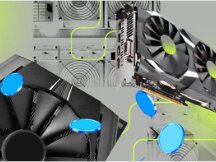比特币挖矿(一):1 CPU 1 VOTE
工作量证明
挖矿即完成工作量证明(Proof of Work),简称POW。POW机制最核心的是哈希(HASH)函数,hash函数最大的特点是:不同输入,随机输出。
对于特定要求的输出,只能大量枚举尝试不同的输入来得到,没有捷径无法偷懒
无论输入尝试了几次还是几亿次,验证者只需对结果执行一次该过程即可
举个例子,学校共1万人且都不同姓名,设计一个Hash函数,输出范围是:[1, 100]。
hash('张三') = 23
hash('李四') = 9
hash('王麻') = 82
欲找到输出等于42(1-100任意一个值都一样)的姓名,理论需要尝试100次。也意味着:1. 尝试100次不代表必然找到该姓名;2. 尝试100次也可能找出多个输出为42的姓名;3. 无论以什么遍历顺序,效率是一样的。
比特币的区块(Block)用于工作量证明,准确的说是区块头部(Block Head)的80字节。一个完整区块由两部分组成:Head + Body。Head存放固定80字节的信息,Body部分存放交易数据。
块头部构成
| 字段名 | 含义 | 大小(字节) |
|---|---|---|
| Version | 版本号 | 4 |
| hashPrevBlock | 上一个block hash值 | 32 |
| hashMerkleRoot | 上一个block产生之后至新block生成此时间内, 交易数据打包形成的Hash | 32 |
| Time | Unix时间戳 | 4 |
| Bits | 目标值,即难度 | 4 |
| Nonce | 随机数 | 4 |
块哈希算法:对这80字节进行double sha256计算。输出是32字节,通常见到的是以16进制显示的64位字符串。
DSHA256(block head) = Block Hash
挖矿过程
结合块头部构成,梳理一下挖矿的计算过程。
第一步、构造Merkle Root Hash,该值由块中的交易决定
收集全网未确认交易
构造Coinbase交易。每个块有且只有一个coinbase交易,记录块奖励和交易费
逐层递归运算。左右节点合并为一个父节点,最终得到一个节点即Merkle Root
第二步、填入其他字段,这些字段无需复杂计算。version通常固定不变,升级时才会更新。prev block hash上一个块哈希值。time当前时间戳。bits目标值,由前一批2016个块决定,难度调整之前固定不变。nonce填零即可。至此块头部构造完成。
第三步、计算块哈希
nonce增一
计算块哈希
检测是否达到难度要求?
达到则广播块,进入下一个块的计算过程
未达到,则继续1的过程
第四步、一定时间未出块,则重新构造merkle root,保证块及时收纳新的交易;调整time,写入当前时间戳,保证时间戳不至于太旧。
CPU时代
nonce大小为4字节(232),其空间为42亿,或者说4G。这在CPU时代是完全够用的,单核计算Double SHA256的速度通常在0.1M ~ 4M之间,核数越多越具优势。
bitcoind源码中CPU挖矿的代码片段, bitcoin/src/miner.cpp(其中nonce遍历完2字节就会去重构块):
//
// ScanHash scans nonces looking for a hash with at least some zero bits.
// It operates on big endian data. Caller does the byte reversing.
// All input buffers are 16-byte aligned. nNonce is usually preserved
// between calls, but periodically or if nNonce is 0xffff0000 or above,
// the block is rebuilt and nNonce starts over at zero.
//
unsigned int static ScanHash_CryptoPP(char* pmidstate, char* pdata, char* phash1, char* phash, unsigned int& nHashesDone)
{
unsigned int& nNonce = *(unsigned int*)(pdata + 12);
for (;;)
{
// Crypto++ SHA256
// Hash pdata using pmidstate as the starting state into
// pre-formatted buffer phash1, then hash phash1 into phash
nNonce++;
SHA256Transform(phash1, pdata, pmidstate);
SHA256Transform(phash, phash1, pSHA256InitState);
// Return the nonce if the hash has at least some zero bits,
// caller will check if it has enough to reach the target
if (((unsigned short*)phash)[14] == 0)
return nNonce;
// If nothing found after trying for a while, return -1
if ((nNonce & 0xffff) == 0)
{
nHashesDone = 0xffff+1;
return (unsigned int) -1;
}
if ((nNonce & 0xfff) == 0)
boost::this_thread::interruption_point();
}
}
过程非常简单,就是反复构造块,尝试nonce计算。CPU N个核就启动N个线程,所以挖矿时CPU通常100%。很快出现软件cpuminer, 使得一个bitcond节点可以支持多台电脑挖矿,众多比特币爱好者纷纷购置高规格电脑开始挖矿,正如中本聪(Satoshi Nakamoto)在论文里所预测的理想数字民主:1 cpu 1 vote!
作者: 潘志彪
参考
http://en.wikipedia.org/wiki/Proof-of-work_system
https://en.bitcoin.it/wiki/Block_hashing_algorithm
https://en.bitcoin.it/wiki/Hashcash

Scan QR code with WeChat


























